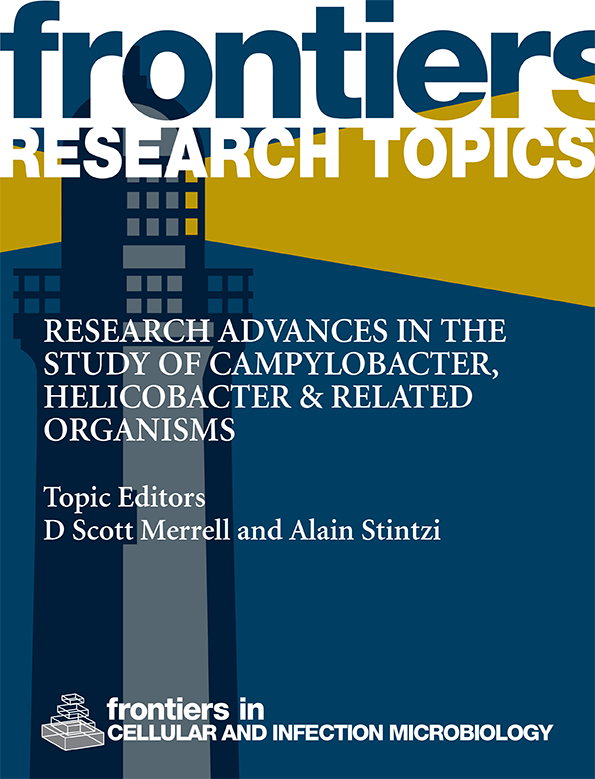尿解支原体和人型支原体感染孕妇的阴道微生物群
IF 4.6
2区 医学
Q2 IMMUNOLOGY
Frontiers in Cellular and Infection Microbiology
Pub Date : 2024-09-09
DOI:10.3389/fcimb.2024.1445300
引用次数: 0
摘要
背景早产与支原体(如人型支原体和解脲支原体)之间的关系已被广泛研究。在临床环境中,对它们的常规诊断方法包括支原体和解脲支原体的培养方法以及 PCR 检测。本研究旨在通过比较传统诊断方法和阴道微生物群落分析,评估人型支原体和解脲支原体感染孕妇的微生物群分布情况。研究设计这项前瞻性病例对照研究涉及 228 名韩国孕妇,利用阴道微生物群落分析、解脲支原体/支原体培养和 12 重 PCR 检测性传播疾病。SPSS 27 中的交叉相关分析比较了两种传统方法与阴道微生物群落分析的结果。R 软件生成的箱形图描述了微生物的相对丰度。结果60.2%的患者尿解支原体培养结果呈阳性,76.4%的患者副脲原体 PCR 呈阳性,13.2%的患者尿解支原体 PCR 呈阳性。只有两名患者的人型支原体培养呈阳性,而 8 名妇女的人型支原体 PCR 呈阳性。阴道微生物群落分析发现,尿解支原体 PCR 阳性组和阴性组之间,I 型加德纳菌和阴道扇贝菌的相对丰度存在显著差异。该研究表明,在诊断人型支原体和解脲支原体感染方面,STD-PCR 可能比解脲支原体/支原体培养更准确。此外,根据阴道微生物群落分析的结果,加德纳菌 I 和阴道扇贝菌的存在意味着它们对解脲支原体和人型支原体感染有潜在的影响。因此,阴道微生物群落分析可以提供更多的病理生理学信息。本文章由计算机程序翻译,如有差异,请以英文原文为准。
Vaginal microbiota of pregnant women with Ureaplasma urealyticum and Mycoplasma hominis infections
BackgroundThe association between preterm birth and Mycoplasma species such as Mycoplasma hominis and Ureaplasma urealyticum has been extensively investigated. In a clinical setting, conventional diagnostic methods for them involve culture methods for Mycoplasma spp. and Ureaplasma spp., along with PCR tests. However, the clinical utility of these tests remains controversial, highlighting the necessity for more robust and reliable methods for identifying and understanding Mycoplasma infections.ObjectiveThis study aimed to assess the distribution of microbiota in pregnant women with Mycoplasma hominis and Ureaplasma urealyticum infection by the comparison of conventional diagnostic methods with vaginal microbial community analysis.Study DesignThis prospective case–control study involved 228 Korean pregnant women and utilized vaginal microbial community analysis, Ureaplasma /Mycoplasma culture, and 12-multiplex PCR for sexually transmitted diseases. Cross-correlation analysis in SPSS 27 compared the results of two conventional methods with vaginal microbial community analysis. R software generated box plots depicting the relative abundance of microorganisms. Network analysis was conducted using Cytoscape.ResultsPositive Ureaplasma urealyticum culture findings were observed in 60.2% of patients, with 76.4% positive for Ureaplasma parvum PCR and 13.2% positive for Ureaplasma urealyticum PCR. Mycoplasma hominis culture was positive only in two patients, while Mycoplasma hominis PCR was positive in eight women. Vaginal microbial community analysis identified significant differences in relative abundances of Gardnerella species type I and Fannyhessea vaginae between the Ureaplasma urealyticum PCR positive and negative groups. Mycoplasma hominis PCR positive patients exhibited significant differences in 11 bacterial species, including Gardnerella species I and Fannyhessea vaginae .ConclusionThis study suggests that STD-PCR may be more accurate than Ureaplasma /Mycoplasma culture for the diagnosis of Mycoplasma hominis and Ureaplasma urealyticum infection. Also, the presence of Gardnerella species I and Fannyhessea vaginae implies their potential influences on Ureaplasma urealyticum and Mycoplasma hominis infections based on results of vaginal microbial community analysis. Therefore, vaginal microbial community analysis may give the more information of their pathophysiology.
求助全文
通过发布文献求助,成功后即可免费获取论文全文。
去求助
来源期刊

Frontiers in Cellular and Infection Microbiology
IMMUNOLOGY-MICROBIOLOGY
CiteScore
7.90
自引率
7.00%
发文量
1817
审稿时长
14 weeks
期刊介绍:
Frontiers in Cellular and Infection Microbiology is a leading specialty journal, publishing rigorously peer-reviewed research across all pathogenic microorganisms and their interaction with their hosts. Chief Editor Yousef Abu Kwaik, University of Louisville is supported by an outstanding Editorial Board of international experts. This multidisciplinary open-access journal is at the forefront of disseminating and communicating scientific knowledge and impactful discoveries to researchers, academics, clinicians and the public worldwide.
Frontiers in Cellular and Infection Microbiology includes research on bacteria, fungi, parasites, viruses, endosymbionts, prions and all microbial pathogens as well as the microbiota and its effect on health and disease in various hosts. The research approaches include molecular microbiology, cellular microbiology, gene regulation, proteomics, signal transduction, pathogenic evolution, genomics, structural biology, and virulence factors as well as model hosts. Areas of research to counteract infectious agents by the host include the host innate and adaptive immune responses as well as metabolic restrictions to various pathogenic microorganisms, vaccine design and development against various pathogenic microorganisms, and the mechanisms of antibiotic resistance and its countermeasures.
 求助内容:
求助内容: 应助结果提醒方式:
应助结果提醒方式:


